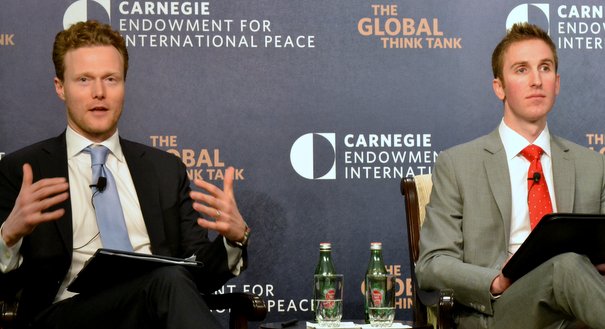Registration
You will receive an email confirming your registration.
3-D printing has opened the world to a revolution in manufacturing. But this new technology may enable the most sensitive pieces of a nuclear weapons program to be more easily produced and transferred undetected around the globe. The United States should lead an international effort to prevent a 3-D printing-enabled cascade of nuclear weapons proliferation before it is too late.
Tristan Volpe and Matthew Kroenig launched their new article, “3-D Printing the Bomb? The Nuclear Nonproliferation Challenge,” and explored how the United States can adopt both top-down and bottom-up strategies to combat this threat to international security. Bruce Goodwin moderated.
Tristan Volpe
Tristan Volpe is a Stanton Nuclear Security fellow and an associate in the Nuclear Policy Program at the Carnegie Endowment for International Peace, where his research focuses on the use of nuclear technology as a bargaining chip in world politics.
Matthew Kroenig
Matthew Kroenig is an associate professor in the Department of Government and School of Foreign Service at Georgetown University and a senior fellow in the Brent Scowcroft Center on International Security at the Atlantic Council.
Bruce Goodwin
Bruce Goodwin is the associate director-at-large for national security policy and research, and is responsible for military and civilian policy liaison at Lawrence Livermore National Laboratory (LLNL). Prior to this position, he ran the nuclear weapons program at LLNL. He has designed five nuclear tests and is expert in plutonium and implosion dynamics.
